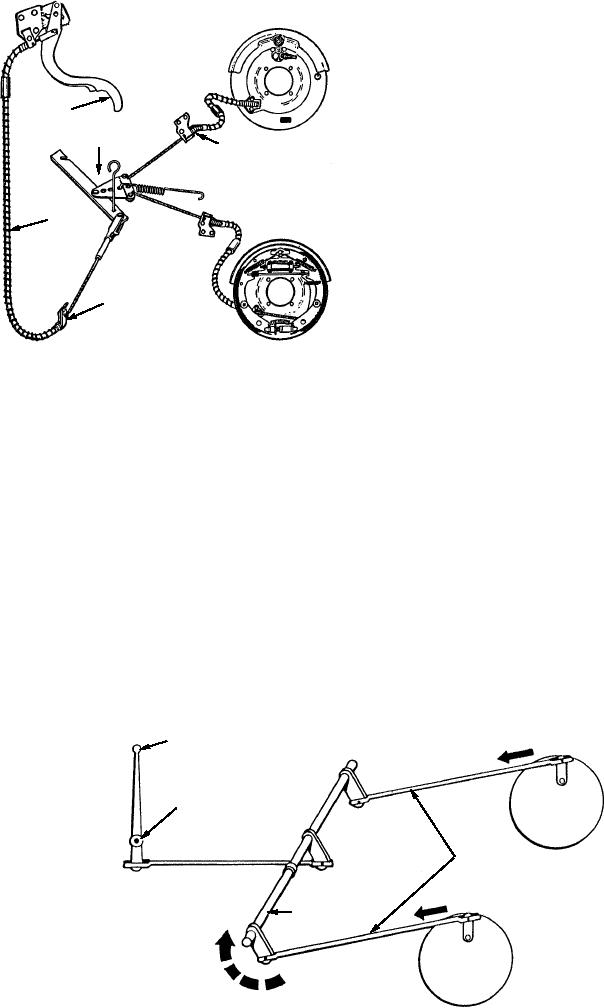
Cable assemblies are also used to operate the
brakes on some nonpowered support equipment.
However, many of this type of equipment are provided
with mechanical brake systems similar to the
arrangement shown in figure 2-34. To apply the brakes,
HAND BRAKE
LEVER
the brake lever is moved to the right, which, in turn,
IMMEDIATE LEVER
moves the front rod forward. This rotates the cross
AND SPREADER
REAR CABLE
shaft clockwise, moving the rear rods forward. This
AND CONDUIT
action rotates a cam in each brake assembly (fig. 2-22),
forcing the brake shoes apart and in contact with the
drum. The brakes are released when the hand lever is
FRONT
moved in the opposite direction.
CABLE
AN
CONDUIT
There are many variations of this arrangement
found on support equipment. Cables are sometimes
used instead of the front and rear rods. On some
CLAMP
equipment the hand lever and cross shaft may be
ASf02033
located directly over the wheels. The control device on
some equipment may be a foot pedal rather than a hand
Figure 2-33.--Mechanical brake system--cables.
lever.
as a protective housing for the cable but also provides a
On some models of towed equipment, the control
means for securing the cable to the frame with clamps.
linkage for the brakes is attached to the tow bar. With
When the brake lever is pulled, the cables move to
the tow bar in the horizontal position, the brakes are
operate levers in the two rear-wheel mechanisms. The
released. When the tow bar is placed in the vertical
levers, as they operate, force the brake shoes apart and
position, the linkage moves and applies the brakes.
in contact with the drum. The intermediate lever and
These models are usually equipped with a hand lever or
spreader equalize the tension of the two cables to the
foot pedal to apply the brakes when the tow bar is in the
brakes. This action, in turn, tends to equalize the
horizontal position.
braking action of the two brakes. When the hand lever
I N S P E C T I O N A N D M A I N T E NA N C E . --
is moved in the opposite direction, the cable moves and
Mechanical brake systems require very little
releases the brakes.
maintenance; however, they must be inspected
Transmission parking brakes (fig. 2-21) are
periodically. Inspections include an operational check
usually operated by a similar cable mechanism.
of the control device and visual inspection of the
However, only a single cable, such as the one labeled
mechanical linkage. You should pay special attention
"front cable and conduit" in figure 2-33, is necessary
to such possible problems as frayed cables, bent rods
for this operation.
and shafts, and loose fittings and clamps. The entire
BRAKE HAND LEVER
FULCRUM
FRONT ROD
REAR RODS
CROSS SHAFT
ASf02034
Figure 2-34.--Mechanical brake system--rods and shaft.
2-27

